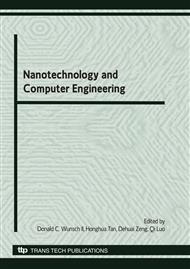p.476
p.482
p.486
p.490
p.496
p.502
p.507
p.512
p.519
Improving the Performance of Language Identification System Using Different GMM-Training Approaches
Abstract:
This paper proposed a feasible system for language identification (LID) and designed four different GMM-training approaches to improve the system performance by accuracy recognition rates. In our experiment, we used these model-training approaches to evaluation on the system performance, which utilizes Linear Prediction Cepstrum Coefficients (LPCC) and Gaussian Mixture Model (GMM), rely on a 10-language task. From all the results, we found an optimal approach for training GMM in LID system, which achieves high accuracy of 85.25%, and indicated that different GMM-training approaches have different performances for LID system, but an advisable training method that proposed in our paper can greatly improve the system performance.
Info:
Periodical:
Pages:
496-501
Citation:
Online since:
June 2010
Authors:
Price:
Сopyright:
© 2010 Trans Tech Publications Ltd. All Rights Reserved
Share:
Citation:


